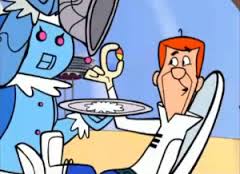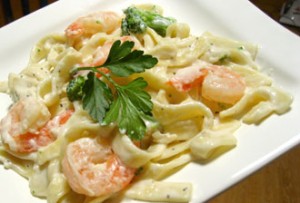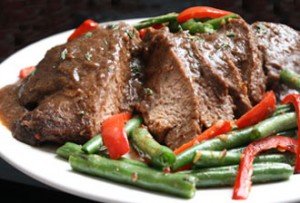What Will Food Be Like in 100 Years?
 While it’s difficult to predict what will happen tomorrow, let’s not allow that to preclude us from speculating on what will become of food as we move toward the year 2100 and beyond. And futurists are predicting neither a Jetsons-like meal in a pill, nor the mass consumption of Soylent Green (don’t know or remember The Jetsons or Soylent Green?…Google them).
While it’s difficult to predict what will happen tomorrow, let’s not allow that to preclude us from speculating on what will become of food as we move toward the year 2100 and beyond. And futurists are predicting neither a Jetsons-like meal in a pill, nor the mass consumption of Soylent Green (don’t know or remember The Jetsons or Soylent Green?…Google them).
There are two main scenarios that currently exist for our future, optimistic and pessimistic and they are based on the effects of climate change and the growth of the global population. Most think-tanks have the global population growing from its current level of 7.1 billion to 10-11 billion by the start of the 21st century barring a global conflagration, pandemic or extinction event due to severe climate change (think happy thoughts).
Since nobody likes a Debbie Downer, let’s focus on the optimistic models. The other one’s just too depressing to contemplate. What follows are the three most common predictions made by futurists who study, well…the future. They are in no way guaranteed to occur.
- We will eat less meat. Especially beef, due to the fact that it is one of the most inefficient methods of calorie production. It takes an average of 13 pounds of grain, fed to cattle, to produce a single pound of beef. We will no longer be able to devote that kind of time, space and energy to beef production. That time, space and energy will be devoted to growing high-yield, high-calorie, and high-protein crops for humans. Could this lead to less McDonald’s and Burger Kings dotting our landscapes? One can only hope.
 A paradigm shift in agriculture. How we grow food will fundamentally change as current crop production must increase by 103% to feed 10 billion people. Some envision urban-based, vertical agriculture in which crops are grown in massive glass skyscrapers as farmland expands upward rather than outward. Others predict exponential growth in self-sufficient agriculture in which crops are grown at home, on campus, or within local communities. In other words, food will become more localized and decentralized. Still others see the growth of both hydroponic and aquaponic agriculture. The former involves soilless crop production with the plants feeding from a nutrient-rich, liquid solution and the latter involves crops and fish living in a symbiotic relationship where the fish fertilize the plants and the plants clean the water for the fish. Lots to think about, no?
A paradigm shift in agriculture. How we grow food will fundamentally change as current crop production must increase by 103% to feed 10 billion people. Some envision urban-based, vertical agriculture in which crops are grown in massive glass skyscrapers as farmland expands upward rather than outward. Others predict exponential growth in self-sufficient agriculture in which crops are grown at home, on campus, or within local communities. In other words, food will become more localized and decentralized. Still others see the growth of both hydroponic and aquaponic agriculture. The former involves soilless crop production with the plants feeding from a nutrient-rich, liquid solution and the latter involves crops and fish living in a symbiotic relationship where the fish fertilize the plants and the plants clean the water for the fish. Lots to think about, no?
- We consume the planet’s most abundant, edible lifeform. Yes folks, we begin to eat more insects for nutrition, not because we lost a bet. Many cultures already consume cricket flour, yellow jacket larvae and various kinds of beetles not named Paul or Ringo. Biologists predict, at any moment, there are over 10 quintillion insects just waiting to be eaten on the globe. Why not oblige them?
English scholar, Thomas Malthus, predicted at the turn of the 18th century that, eventually, global population would be curtailed by the spread of famine and disease associated with a more humans than the earth could sustain. Let’s hope that the same humans find a solution before that occurs.
In the meantime, fill up on delicious meals from MagicKitchen.com, and let those images feel from your head.



 <
<
You must be logged in to post a comment.